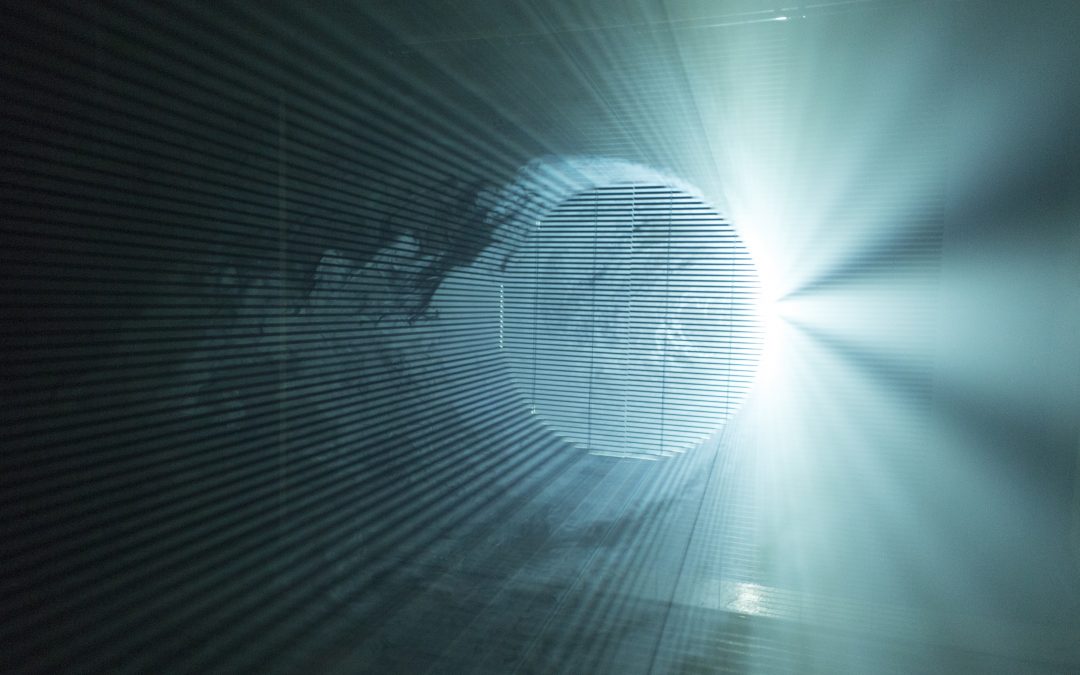NONOTAK is the collaboration between illustrator Noemi Schipfer and architect/musician Takami Nakamoto, who design and construct audiovisual installations with a masterful display of light matched with sound. Takami remembers what it was like studying architecture. “I had been relating space [and] sound in my architectural projects,” he says. “From ritualist places celebrating sound, to shelters in the desert where wind could produce sound, and where sunlight could generate beautiful shadow patterns, and auditoriums/hotels where live music sound would travel in the guest rooms so they could experience it in a private environment.”
After realizing that he had a sonic and sculpture approach to his projects, Takami became interested in creating smaller scale spaces where he could have full control of how it would look. He realized how the work he did could interact with Noemi’s work. “Noemi had an obsession with lines and vibrations, and this is something I really loved and could relate to other forms of art like the architecture [of] Sou Fujimoto, Kazuyo Sejima, and Peter Zumthor, etc.; we both wanted to collaborate to project her illustration style into space through installations and performances.”
The lights and music work interchangeably to inspire one concept. As the music producer, every piece of sound you would hear is Takami’s creation. “When there are a lot of 2-D video animation involved, Noemi will generate them, and I control how they behave along with the timeline,” Takami explains. But when it’s time to go live, Noemi handles the visuals while Takami handles the music. “I think this is a pretty organic and chaotic way of working together and we like the intensity of it.” Other times, it’s the set-up space and its vibe and energy that inspires the installation’s narration, Takami says.
NONOTAK approaches each project as a whole, not as a segmented approach to lights and sound. “We just want to make sound and light oscillate in an organic way so audience can forget about that ‘sync’ part but look at the installation as one complete piece to enjoy.” They first determine any constraints that exist as they begin work on a new installation. “It could be a time, space, financial, security, contextual, social parameter that wouldn’t allow you to do whatever you want to do. And usually in moments like this, it becomes interesting to think about how to get the most of artistic freedom within the established rules.” Developing and completing a project could take as little as a few days, or more than a year, based on the parameter. The experiences are intended to evolve over time, naming each work by its respective version. “It’s hard to be 100 percent satisfied but too frustrating to wait too long before seeing how good our ideas work; so we prefer presenting projects to the public in a way we would present experiences of light, space and sound. And also make it possible for people to see our evolution.”






